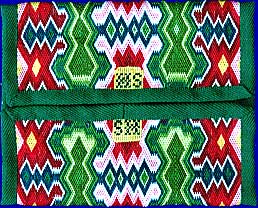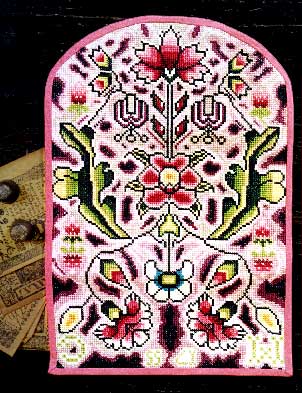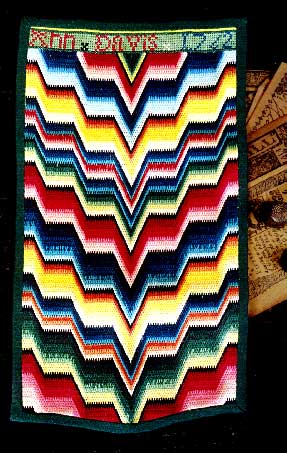Pocket Book Samplers
Worked linen pocketbooks were often made in New England between 1740 and 1790, but reached their peak of popularity between 1760 and 1780. This type of worked pocketbook was more popular in America than in England. They were obviously valued by their owners, and mention of them can be found in wills, inventories, and diaries of the period. While leather pocketbooks were more common, being commercially available, more of these hand-worked examples survive, perhaps because of personal and sentimental reasons. Both sexes carried these pocketbooks. Women carried theirs inside their pockets (the large, U-shaped cloth bags tied at the waist and worn under the outer skirt). Inside the pocketbook, a woman might carry buttons, a thimble, hooks, needles, and sundry papers. Men usually carried business and personal documents, coins and paper money in theirs; hence women’s pocketbooks were usually smaller than men’s. The pocketbook itself was usually lined with a brightly color wool or silk fabric, and given a stiff interlining of cardboard. The ends were bound by an extension of these binding tapes, or a metal clasp. Cross-stitched pocketbooks of this period are quite rare, with Irish stitch being the most common technique used. Some examples worked in Queen stitch survive, usually executed in silk rather than wool because of the intricacy of that stitch. Most of them were made with wool floss





